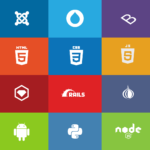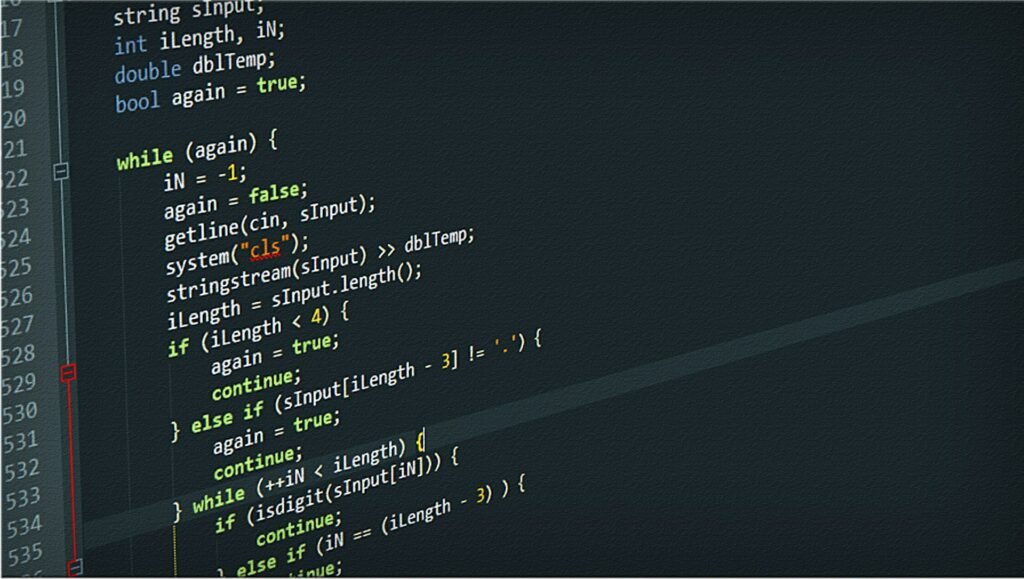Learn Html5/ what is html5
The fifth and newest release of the HTML standard, known as HTML5, is the language that is used to build and organize information on the World Wide Web. By offering fresh attributes and components that make it simpler to design complex and dynamic online web applications, HTML5 was created to improve the possibilities of web development.

Since Flash or other third-party plugins are not required, HTML5’s new elements, properties, and apis (application programming interfaces) provide enhanced support for audio and video, graphics, animations, and interaction.
HTML5 has made a number of significant enhancements and additions.
- The introduction of certain new semantic elements.
- These include the “header,” “nav,” “article,” “section,” “footer,” and others popular html5 new tag.
- Entertainment support with audio and video tags is supported by HTML 5.
- Java script and the Canvas Element enable HTML developers to work with animation, graphics, and dynamically interactive web pages.
- Include a few of new form components, such as the email input type, date, and range.
- HTML5 has geolocation api capabilities.
- You can be integrating java script and CSS into an already-existing html web page.
- Improved web browsing SEO, and simpler html web content architecture.
Difference between html and html5/ html5 vs html/ html and html5 difference
Let’s compare the key differences between HTML4 and HTML5, the latest version of the HTML markup language.
Evolution and version.
- HTML – HTML is a markup language which has been used on the web since the beginning. The term “HTML” is frequently used to refer to previous versions such HTML 4 as well as XHTML.
- HTML5 – HTML5 represents the HTML standard’s fifth significant upgrade. In comparison to past editions, it represents a considerable upgrade and improvement.
Semantic Elements.
- HTML – The number of semantic components in previous versions of HTML was quite small. To organize content, developers mostly utilized generic components like “div” and “span.”
- HTML5 – HTML5 provides a variety of semantic components, including “header,” “nav,” “article,” “section,” “footer,” and “main.” These components provide the information with more organization and significance.
Multimedia assistance.
- HTML – In earlier versions, third-party plugins like Flash were necessary to include multimedia content (including audio and video).
- HTML5 – Plugins like Flash are less essential because to HTML5’s inherent capability for embedding multimedia material utilizing the “audio” and “video” elements.
Canvas Element.
- HTML – earlier versions of HTML lacked a native method for drawing images or animations instantly inside the browser.
- HTML5 – HTML5 introduces the canvas element, which enables javascript to be used to generate dynamic visuals, animations, and interactive content.
Types of form inputs.
- HTML – earlier versions of HTML only provided a small number of form input types.
- HTML5 – HTML5 adds additional input types, such as <input type=”email”>, <input type=”date”>, <input type=”range”>, among others, to enhance user experience and data management in forms.
Capabilities offline.
- HTML – Previous versions lacked built-in support for offline consumption and storing.
- HTML5 – By caching resources, HTML5 includes capabilities like the Application Cache API, which enables developers to build web apps with offline functionality.
Google Maps API.
- HTML – Earlier iterations of HTML lacked a standardized method for accessing a user’s location.
- HTML5 – HTML5 has a Geolocation API that enables websites to ask for and use a user’s location.
Web employees.
- HTML – Previous iterations of HTML did not provide a mechanism to conduct background processes apart from the main page.
- HTML5 – HTML5 adds the idea of web workers, or background-running scripts, which enhance multitasking and performance.
Improved Accessibility.
- HTML – Accessibility has been improved in HTML, where it used to be regarded but not as explicitly handled.
- HTML5 – By providing semantic components and characteristics that aid in the creation of more accessible content, HTML5 places a higher focus on accessibility.
Integrating apis.
- HTML – Early versions of HTML featured less standardized apis for different features.
- HTML5 – HTML5 offers a wider selection of apis, such as those for dragging and dropping, real-time communication, and audio/video processing.
Features of html5/ new features of html5/ html5 new features/
Numerous new functions and enhancements are brought to the web development environment by HTML5.
These are some of HTML5’s main attributes.
- Introduce semantic components.
- Multimedia assistance.
- A canvas component.
- New forms of form input.
- Capabilities for storing data and information offline.
- Support for geolocation api.
- Features of drag and drop api.
- CSS3 integration with the layout of the current web page.
- Manipulation of audio and video.
- Increased usability.
- Compatibility with several browsers.
- Responsive design for computers, smartphones, and other electronic devices.
- Apis for current web programs.
- Testing and bug fixing are simpler than in earlier versions.
Latest version of html
HTML5 is the latest and most widely used version of the HTML standard.
Html5 tags/ tags in html5/ new tags in html5/html5 new tags/ html 5 elements
A number of new and improved tags that support structuring and defining content on web pages were introduced by HTML5.
Here are a few crucial HTML5 tags.
New tags or semantic structure elements.
- <header> – Denotes the header of an article or a specific part thereof.
- <nav> – Describes links or a navigation menu inside a navigation section.
- <article> – Denotes a complete composition or piece of information that may be shared and used again.
- <section> – A section in a document designates a grouping of content by theme.
- <aside> – Denotes information that is only loosely connected to the primary topic, such as sidebars.
- <footer> – Describes a document’s footer section or a part within a document.
- <main> – denotes a document’s primary content, omitting the headers, footers, and sidebars.
Text components.
- <mark> – Highlighting text to denote importance or particular focus.
- <time> – Denotes a particular time or a period of time.
- <Ruby> – Used to represent brief comments to basic text in languages with complicated character sets.
Media components.
- <audio> – Inserts audio material on a webpage.
- <video> – Inserts video content on a webpage.
- <source> – Specifies a number of media assets for the <audio> and <video> components.
Form Components.
- <input> – Defines an input field that may accept different kinds of user input.
- <textarea> – A multiline input text area is represented by the tag “textarea.”
- <select> – Produces a drop-down menu for selection.
- <datalist> – A list of preset choices is provided for an input element by the datalist element.
- <progress> – Describes how an activity or a process is progressing.
- <metre> – Denotes a scalar measurement that falls within a predetermined range.
Interactive Elements.
- <details> – Displays a disclosure widget that may be toggled open or closed to reveal or conceal more material.
- <summary> – The “summary” element gives the “details” element a clear heading.
- <menu> – Denotes a set of options or actions, frequently used in navigation menus or context menus.
Canvas and Graphics.
- <canvas> – animations, and interactive material on a canvas with javascript is possible with canvas.
Form input types.
Forms now support a number of additional input types thanks to HTML5.
- <input type=”email”>
- <input type=”date”>
- <input type=”color”>
- <input type=”range”>
- <input type=”search”>
- <input type=”number”>
Media and embedding.
- <embed> – Incorporates external content, such as multimedia or other interactive content.
- <iframe> – Incorporates an outside web page into the current document.
Apis and scripting.
- <script> – Incorporates or references to outside scripts, usually javascript.
- <noscript> – Displays content when scripts are not enabled or supported.
Web and interactive components.
- <dialogue> – Denotes a popup or dialogue box.
- <template> – Declares material that may be copied using javascript and injected into the document.
Links and navigation.
- <a> – A link is defined by the character “a.”
- <link> – Indicates the connections among the present document and outside sources.
Video html5/video in html5
Using HTML5, the <video> element may be used to embed videos. With the help of this component, you may incorporate video material into your website without the need of external plugins.
Here is a simple illustration of how to include a video using the <video> element.
Html code
<!DOCTYPE html>
<html>
<head>
<title>How to Video insert into HTML5 Video</title>
</head>
<body>
<h1>Simple HTML5 Video Insert Example</h1>
<video controls width=”500″ height=”300″>
<source src=”videoname.mp4″ type=”video/mp4″>
<source src=”videofile.webm” type=”video/webm”>
Your web browser is too old and not support html 5 video tag.
</video>
</body>
</html>
In this particular case.
- The video container is defined by the <video> element.
- Playback controls like pause, volume, and play are added through the controls property.
- The size of the video displaying area are determined by the height and width properties.
- One or more “source” elements that list the contents of video files and the types that are contained inside the “video” element. As a result, the browser may select the best format depending on compatibility.
- The phrase “Your web browser is too old and not support html 5 video tag.” will be shown as fallback material if the browser does not support HTML5 video or the specified formats.
- •Replace “your-video.mp4” and “your-video.webm” with the correct locations to your video files. Multiple formats (such MP4, webm, and Ogg) should be offered to ensure compatibility with a variety of browsers.
Html5 tutorial for beginners/ html5 tutorial/ html tutorial 5
There are several online resources that may assist beginners in learning HTML5 if they so want.
Here is a detailed tutorial for learning HTML5.
- Be aware of HTML5’s fundamentals.
- Examine the tags for HTML5 features and semantics.
- Work with links and text.
- Insert multimedia objects and images.
- Control and operate input and forms.
- New Types of HTML5 Input.
- Be familiar with and utilize HTML5 features and apis.
- Use CSS features for Basic Styling control.
- Utilize responsive design elements.
- Handle an increasing number of HTML5 tags and use control to handle them effectively.
Html5 for games/ html games/ html game
Because of its capabilities for handling user interactions, generating visuals, and giving cross-platform interoperability, HTML5 has grown to be a popular platform for game development.
Here are some essential features of HTML5 game creation.
- Canvas API – The HTML5 <canvas> element enables you to directly generate and edit visuals using javascript. This is an essential component for creating 2D games.
- Webgl – A javascript API called webgl is used to render 3D visuals in web browsers. It allows for the creation of 3D browser-based games and is built upon the HTML5 <canvas> element.
- Audio and Video – With HTML5’s audio and video elements, you can incorporate multimedia components like sound effects, music for background, cutscenes, and more into your games.
- Responsive Design – HTML5 games that are responsive to multiple screen sizes and orientations can be created. This is necessary to guarantee a consistent experience when playing on different devices.
- Browser Compatibility – Since HTML5 games can be played directly in web browsers, no additional downloads or installs are necessary for players to access them.
- Cross-Platform Compatibility – Games made with HTML5 may be played on a variety of platforms and gadgets, including desktop computers, mobile phones, tablet computers, and even smart tvs.
- Performance Optimization – Game engines and libraries for HTML5 have been created to enhance game performance, enabling fluid gaming even on less capable devices.
- Game Libraries and Frameworks – On top of HTML5, there are a number of libraries and frameworks for game creation that offer pre-made tools and components for creating games. Phaser, Three.js, and Babylon.js are a few examples.
- Support for Touch and Gestures – Because HTML5 supports touch events, it may be used to create mobile games with touch-based controls and interactions.
- Local Storage and Data Management – You can save and handle game advancement, settings, and user settings on the player’s device using HTML5’s local file system and other storage techniques.
- Websocket and Multiplayer – Real-time multiplayer capabilities in games may be implemented using websockets, which HTML5 allows.
- Performance considerations – Although HTML5 is capable of handling sophisticated games, smooth gaming may need thoughtful consideration of performance optimization approaches.
- Security Considerations – When building games in an online context, be aware of safety considerations, such as preserving user data and reducing potential vulnerabilities.
- Monetization and Distribution – Web platforms, app shops, and gaming portals make it simple to distribute HTML5 games. Ads and in-app purchases are only two examples of possible monetization strategies.
Html5 download
If you want to offer downloadable files on your website using the HTML5 download feature. The download property is used within anchor <a> tags to specify that, when clicking, a link, a file should be downloaded.
Here is how to apply it.
Html code
<!DOCTYPE html>
<html>
<head>
<title>Html5 Download Example</title>
</head>
<body>
<h1>How to donload any file in html5</h1>
<p>Click the link below to download a sample text file:</p>
<a href=”file path/sample.txt” download=”sample.txt”>Click link to download file</a>
</body>
</html>
Basic html syntax
The basic syntax for an HTML5 html document.
Html code
<!DOCTYPE html>
<html>
<head>
<title>Html5 page title</title>
</head>
<body>
<h1>Welcome to mit academys</h1>
<p>Simple paragraph tag in html5.</p>
</body>
</html>
Let’s examine the many components of this HTML5 syntax.
- <!DOCTYPE html> – The HTML5 standard is indicated by this declaration.
- <html> – The main element of an HTML document is html. It encompasses all other things.
- <head> – The document’s title and references to external resources (such as CSS, javascript, etc.) Are included in this area of the document’s meta-data.
- <title> – Sets the title of the webpage, which is shown in the title bar or tab of the browser.
- <body> – The data of the web page that people may view in their browsers is contained in this part.
- <h1> – The highest-level headline on the page is represented by the heading element <h1>. For several levels of headers, you may use <h2>, h3>, and so on.
- <p> – The paragraph element, or p, is used to separate content into paragraphs.
Editor for html5/ editing html5/ html5 editor
You may use a variety of editors for text and integrated development environments (ides) to write HTML5.
These are some common online and offline HTML5 editors.
- Visual Studio Code (vscode) – is a code editor created by Microsoft that is small and incredibly flexible. It provides several extensions for the latest versions of HTML5, CSS, javascript, and other languages.
- Sublime Text – is a popular among developer’s code editor that is quick and packed with features. It provides syntax highlighting for several languages, including HTML5, and has a simple user interface.
- Atom – github created this open-source, free code editor. Atom is renowned for being hackable and adaptable, and it provides a large selection of packages for HTML5 programming.
- Brackets – Adobe’s open-source coding editor called Brackets. It provides inline editing and real-time previews and is particularly made for web development.
- Webstorm – webstorm, a powerful IDE created by jetbrains, especially for web development. For HTML5, CSS, and javascript, it offers cutting-edge coding capabilities and intelligent coding support.
- Notepad++ – A simple text editor for Windows that supports HTML5 development with a variety of plugins and syntax highlighting.
- Codepen – A web-based code editor made especially for front-end development that supports HTML5, CSS, and javascript. It works well for quickly exchanging code samples and prototyping.
- Jsfiddle – Like codepen, jsfiddle is an online application that enables collaborative HTML, CSS, and javascript code writing and testing.
Html5 template
You may use an HTML5 template as a starting point for web page creation since it offers a fundamental framework. It comprises the necessary HTML5 building blocks, meta data, and frequently simple CSS style.
Here is a straightforward HTML5 template.
Html code
<!DOCTYPE html>
<html lang=”en”>
<head>
<meta charset=”UTF-8″>
<meta name=”viewport” content=”width=device-width, initial-scale=1.0″>
<title>Your Page Title</title>
<link rel=”stylesheet” href=”styles.css”>
</head>
<body>
<header>
<h1>Test Website Demo</h1>
<nav>
<ul>
<li><a href=”#”>Home</a></li>
<li><a href=”#”>Blog</a></li>
<li><a href=”#”>About</a></li>
<li><a href=”#”>Disclaimers</a></li>
<li><a href=”#”>Contact</a></li>
</ul>
</nav>
</header>
<main>
<section>
<h2>This is a simple test website demo</h2>
<p>You can write anything between the paragraph tag</p>
</section>
</main>
<footer>
<p>© 2023 Demo Website, All rights reserved.</p>
</footer>
</body>
</html>
This HTML5 template uses.
- ! DOCTYPE html – Specifies the HTML5 doctype statement with !DOCTYPE html.
- The tag html lang=”en” – Establishes the language property and defines the HTML page.
- Head – Incorporates metadata, such as connections to other resources like CSS files, character encoding, and viewport settings.
- Title – Defines the page’s title.
- Link – Links pointing to external CSS stylesheets, replace “styles.css” with the URL of your own stylesheet.
- Body – Consists of the web page’s visible content.
- Header – Usually contains the site’s logo and navigation links.
- Main – Contains the page’s primary content.
- Section – denotes a segment of content inside the main region that is themed in nature.
- Footer – Contains footer text, which is frequently copyright information.
Current version of html
The most recent iteration of the HTML standard is HTML5. HTML5 has gained a lot of traction and is now the version being utilised for web development.
How to use html5
To specify the content and structure of a web page using HTML5, structured markup must be created.
Here is a step-by-step tutorial on using HTML5.
Create a Simple HTML Document.
Start with an HTML document’s fundamental structure.
Html code
<!DOCTYPE html>
<html>
<head>
<title>Set your desire web page title</title>
</head>
<body>
<Add desire html5 content in body sections >
</body>
</html>
Add Content.
Inside the <body> section, add your content using HTML elements.
Here are some examples.
- Headings – <h1>, <h2>, <h3>, etc.
- Paragraphs – <p>
- Lists – <ul>, <ol>, <li>
- Links – <a href=”url”>Link Text</a>
- Images – <img src=”image-url” alt=”Description”>
Structure Content.
Use semantic elements to structure your content.
- <header> – used for the header of your page.
- <nav> – used for navigation menus.
- <main> – used for the main content of your page.
- <article> – used for standalone content like blog posts.
- <section> – used for grouping related content.
- <footer> – used for the footer of your page.
Embed Multimedia.
- To embed audio and video material – use the “audio” and “video” components. For compatibility, define alternative formats using the <source> element within these.
Create Forms.
- Create forms by use the <form> element to design user input forms. Add input components like as buttons, textareas, choose boxes, and input elements.
Utilizing CSS, add styles.
- Your HTML text should be styled using CSS (Cascading Style Sheets). Using the <style> element, you may directly include styles in an HTML page, or you can use the link> tag to link to an external CSS file.
Enhance with javascript.
- Use javascript to bring interaction to your enhancements. Using the <script> element, you may insert scripts directly into your text or by referring to an external javascript file.
Meta Information and Head Tags.
- Use “meta” tags in the “head” portion of your website to offer meta-information about your page, such as character encoded data, viewport settings, and keywords.
Responsive Design.
- Create responsive designs that adjust to various screen sizes and devices by using CSS media queries.
Test and Validate.
- To assure compatibility, test your HTML code in a number of different browsers. To check for flaws in your HTML code, you may also utilize online validators.
Learn and Explore.
- Continue learning about and investigating HTML5‘s new components, capabilities, and recommended practises. To further your comprehension, a variety of online classes, courses, and resources are accessible.
Html editor free
There are several free HTML editors available that you can use to create and edit HTML files.
Here are a few popular options.
- Notepad++
- Sublime Text.
- Atom.
- Visual Studio Code (vscode).
- Brackets.
- Bluegriffon






































































































































































great!! article… streaming anime atanoboy